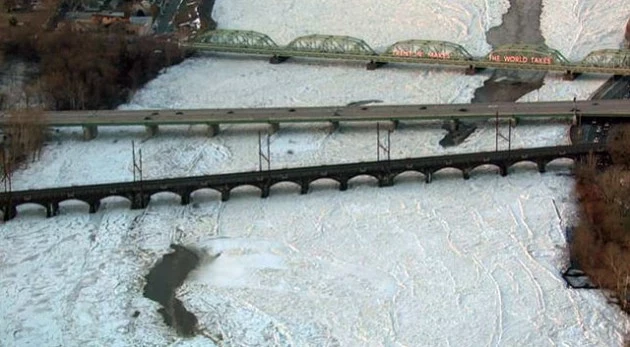(behind paywall, found most of it
here)
Conclusions
During the latest three millennia, one can observe a clear cooling trend in
the Earth's climate (Keigwin, 1996; Sorokhtin and Ushakov, 2002; Gerhard,
2004; Khiyuk and Chilingar, 2006; Sorokhtin et al., 2007). During this
period, deviations of the global temperature from this trend reached up to
3iC with a clear trend of decreasing global temperature by about 2iC.
Relatively short-term variations in global temperature are mainly caused by
the variations in solar activity and are not linked to the changes in carbon
dioxide content in atmosphere.
Accumulation of large amounts of carbon dioxide in the atmosphere leads to
the cooling, and not to warming of climate, as the proponents of traditional
anthropogenic global warming theory believe (Aeschbach-Hertig, 2006). This
conclusion has a simple physical explanation: when the infrared radiation is
absorbed by the molecules of greenhouse gases, its energy is transformed
into thermal expansion of air, which causes convective fluxes of air masses
restoring the adiabatic distribution of temperature in the troposphere. Our
estimates show that release of small amounts of carbon dioxide (several
hundreds ppm), which are typical for the scope of anthropogenic emission,
does not influence the global temperature of Earth's atmosphere.
References
Arrhenius, S. 1896. On influence of carbonic acid in the air upon the
temperature of the ground. Phil. Mag. 41:237-276.
Aeschbach-Hertig, W. 2007. Rebuttal of "On global forces of nature driving
the Earth's climate. Are humans involved?" by L. F. Khilyuk and G. V.
Chilingar. Env. Geol.
Bachinskiy, A. I., Putilov, V. V., and Suvorov, N. P. 1951. Handbook of
Physics. Moscow: Uchpedgiz, 380 pp.
Gerhard, L. C. 2004. Climate change: Conflict of observational science,
theory, and politics. Am. Assoc. Petrol. Geol. Bull. 88:1211-1220.
Keigwin, L. D. 1996. The little ice age and medieval warm period in the
Sargasso Sea. Science 274:1504-1508.
Khilyuk, L. F., Chilingar, G. V., Endres, B., and Robertson, J. 2000. Gas
Migration. Houston: Gulf Publishing Company, 389 pp.
Khilyuk, L. F., and Chilingar, G. V. 2003. Global warming: Are we confusing
cause and effect? Energy Sources 25:357-370.
Khilyuk, L. F., and Chilingar, G. V. 2004. Global warming and long-term
climatic changes: A progress report. Environ. Geol. 46:970-979.
Khilyuk, L. F., and Chilingar, G. V. 2006. On global forces of nature
driving the Earth's climate. Are humans involved? Environ. Geol. 50:899-910.
Landau, L. D., and Lifshits, E. M. 1979. Statistical Physics. Moscow: Nauka,
559 pp.
Marov, M. Ya. 1986. Planets of Solar System, Moscow: Nauka, 320 pp.
Robinson, A. B., Baliunas, S. L., Soon, W., and Robinson, Z. W. 1998.
Environmental effects of increased atmospheric carbon dioxide.
[
in...@oism.org;
in...@marshall.org]
Schimel, D. S. 1995. Global Change Biology, 1:77-91.
Sorokhtin, O. G. 1990. The greenhouse effect of atmosphere in geologic
history of Earth. Doklady AN SSSR 315:587-592.
Sorokhtin, O. G. 2001a. Greenhouse effect: Myth and reality. Vestnik Russian
Academy of Natural Sciences 1:8-21.
Sorokhtin, O. G. 2001b. Temperature distribution in the Earth. Izvestiya
RAN, Physics of Earth 3:71-78.
Sorokhtin, O. G., and Ushakov, S. A. 2002. Evolution of the Earth. Moscow:
Moscow Univ. Publishers, 560 pp.
Sorokhtin, O. G., Chilingar, G. V., and Khilyuk, L. F. 2007. Global Warming
and Global Cooling. Evolution of Climate on Earth. Amsterdam: Elsevier, 313
pp.
Sorokhtin, O. G., Chilingar, G. V., Khilyuk, L. F., and Gorfunkel, M. V.
2006. Evolution of the Earth's global climate. Energy Sources 29:1-19.
Venus (Atmosphere, Surface and Ecosystem). 1989. Moscow: Nedra, 482 pp.
Voytkevitch, G. V., Kokin, A. V., Miroshnikov, A. E., and Prokhorov, V. G.
1990. Handbook of Geochemistry. Moscow: Nedra, 480 pp.



























.png)
_-_2014-06-30_14.16.03.png)
_-_2014-06-30_14.15.01.png)
_-_2014-06-30_14.31.18.png)


















